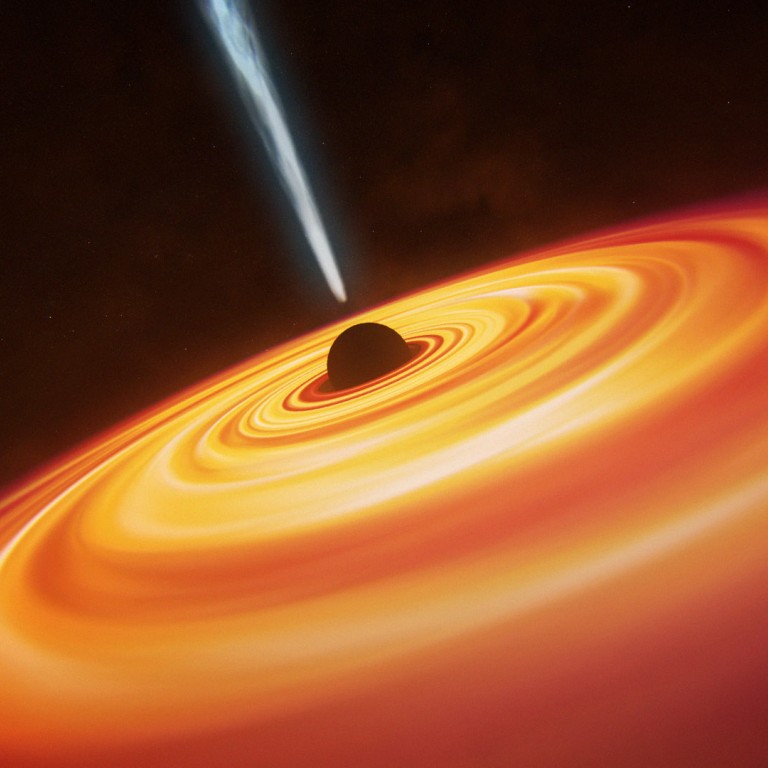
Scientists closer to discovering why supermassive black holes grow so big
Scientists have tested observational data against top physicists' theories to learn more about how supermassive black holes grow so huge.
The researchers from Australia’s Commonwealth Scientific and Industrial Research Organisation (CSIRO) studied the strength of gravitational waves generated from pairs of black holes colliding with each other, using a radio telescope.
“For the first time, we’ve used information about gravitational waves as a tool in astrophysics,” said Dr Ryan Shannon at CSIRO, who led the study.
“It’s a powerful new tool. These black holes are very hard to observe directly, so this is a new chapter in astronomy.”
Physicists have predicted that when galaxies merge, their resident central black holes will meet and emit gravitational waves. Such collisions create a background of gravitational waves at a frequency that can be detected by radio telescope.
The strength of the gravitational wave background depends on how often supermassive black holes spiral together and merge, how massive they are, and how far away they are.
The scientists collected nearly 20 years’ worth data about the effects of these waves on surrounding small, spinning stars called pulsars.
They are difficult to observe using current instruments "but we can measure the effect they have on pulsars because they are like accurate ticking clocks in space in that they generate regular pulses of radiation,” said Vikram Ravi, a PhD student at the University of Melbourne and co-author of the study.
They then used the data to test four models of black hole growth. This allowed them to effectively rule out black holes gaining mass only through mergers, but the other three models “are still in the game”, said Dr Sarah Burke-Spolaor of California Institute of Technology.
Ravi said: “One model for black hole growth has failed our test and we’re painting the others into a corner. They may not break, but they’ll have to bend.”
The scientists believe that once they have combined the pulsar-timing data with data from other telescopes in Europe and the United States, they should have enough accuracy to detect gravitational waves “within ten years,” said project leader Dr George Hobbs at CSIRO.
The research was published in the journal .

